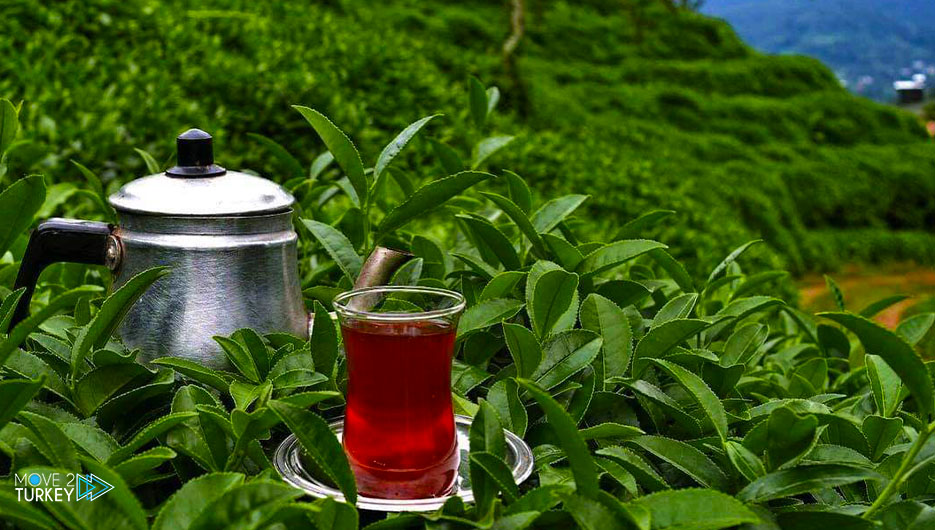
The luxurious Turkish tea is famous all over the world for its unique taste and method of preparation, and its fields in the Black Sea region arouse the curiosity of tourists to see how it is grown, its stages of growth and harvesting before it reaches the reach of the drinkers.
-Advertisement-
Photography is fond of Turkish tea plantations, as their green cover, which is shaped like the teeth of a comb, extends as far as the eye can see in the foothills of the Black Sea Mountains, especially the eastern regions of it.
The tea plantations provide the country with an abundant product that fills its heavy consumption of the distinctive product, as it is considered one of the most countries in the world consuming the red drink, with an annual yield of up to 2.3 kg, so that the warm drink with its special cup has become part of the culture of the Turkish people.
The states of the eastern basin of the Black Sea in Turkey, led by Rize, followed by Trabzon, Artvin, Ordu, and Giresun, are among the most productive states, with an estimated total cultivated area of 849,000 dunams (a dunam equals one thousand square meters), according to the figures of the Ministry of Forestry and Agriculture for 2019.
-Advertisement-
In the “Eli Chai” area of the Wilayat of Rize (northeast), tourists flock to the tea plantations, where hundreds of visitors come daily as part of their tours of the region.
Tourists aim to know how tea is grown, its growth and harvesting stages, and to obtain information about all these stages, as well as to take memorial photos, where its captivating beauty attracts the eyes and tempts people to document its beautiful moments.
In the Ili tea fields, workers can be seen harvesting the tea leaves through special tools that are picked and collected in bags to be transferred to the later stages of drying, packaging and transportation to internal and external markets.
Information from the Turkish Ministry of Forestry and Agriculture indicates that the history of tea production and cultivation dates back to 1917, when a delegation was sent to study the region. Studies indicated that the eastern Black Sea is suitable for tea production.
-Advertisement-
The Turkish Parliament enacted a law in 1924 to grow several products, including tea, to develop the region, especially in Rize, based on previous government reports.
The first green and dry tea leaf was produced in 1938, and two years later tea production was placed under the protection of the state, which contributed to the expansion of the cultivated areas and the further development of the region.
The tea is grown on high slopes to an altitude of a thousand meters above sea level, and because of the altitude, the atmosphere provides protection from microbes and does not use fertilizers to combat diseases and insects.
-Advertisement-
The world celebrates the International Day of Tea every year, the most consumed drink in the world after water. The United Nations designated 2019 May 21 as International Tea Day with the aim of “raising awareness of its importance in the fight against hunger and poverty.”
Tea is an integral part of Turkish culture and has become a traditional and national drink in a very short time, although it entered daily life in Turkey relatively late.
Tea is also a symbol of friendship and hospitality in Turkey. The Turkish type is the third largest global market after China and India, while Turkey ranks seventh in the world in terms of the area of tea cultivation fields.
-Advertisement-
The method of preparing Turkish tea is based on the use of a two-story teapot, one for boiling water and the other for tea. Water is added to the tea infusion to dilute it and served in traditional Turkish tea cups.






















